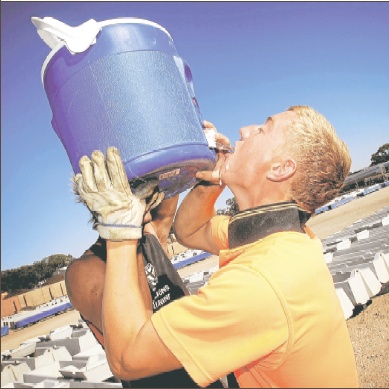Report warns of heat rise
 The World Meteorological Organization (WMO) says there is a 50:50 chance of global temperature temporarily reaching the 1.5°C warming threshold in the next five years.
The World Meteorological Organization (WMO) says there is a 50:50 chance of global temperature temporarily reaching the 1.5°C warming threshold in the next five years.
Researchers say it is a stark and sobering finding to discover that reaching global temperatures of 1.5°C (the limit targeted by the Paris agreement) is becoming so likely, yet the world's greenhouse emissions are still increasing.
Not only is there a 50:50 likelihood of the global temperature rising 1.5°C above pre-industrial level for at least one of the next five years - the likelihood is increasing with time, the new climate update says.
The experts say there is a 93 per cent likelihood of at least one year between 2022-2026 becoming the warmest on record and dislodging 2016 from the top ranking.
The chance of the five-year average for 2022-2026 being higher than the last five years (2017-2021) is also 93 per cent, according to the Global Annual to Decadal Climate Update, produced by the United Kingdom’s Met Office, the WMO lead centre for such predictions. Climate prediction groups from Spain, Germany, Canada, China, USA, Japan, Australia, Sweden, Norway and Denmark contributed predictions this year too.
The chance of temporarily exceeding 1.5°C has risen steadily since 2015, when it was close to zero.
For the years between 2017 and 2021, there was a 10 per cent chance of exceedance. That probability has increased to nearly 50 per cent for the 2022-2026 period.
The Paris Agreement sets long-term goals to guide all nations to substantially reduce global greenhouse gas emissions to limit the global temperature increase in this century to 2°C while pursuing efforts to limit the increase even further to 1.5°C.
The Intergovernmental Panel on Climate Change (IPCC) says that climate-related risks for natural and human systems are higher for global warming of 1.5°C than at present, but lower than at 2°C.








 Print
Print